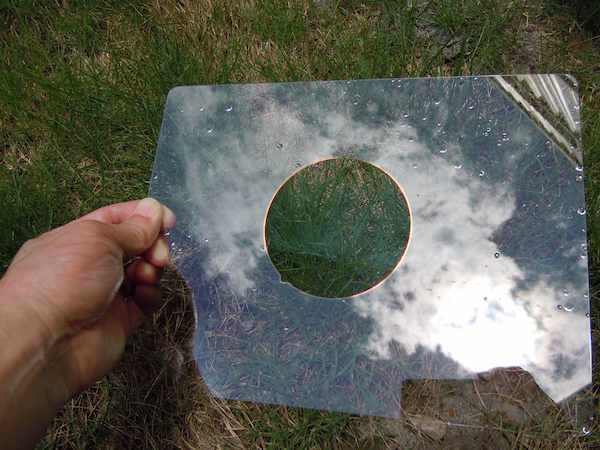
[Image above] Corning’s new antireflective and easy-to-clean glass technology may be the future in visible device screens. Credit: Corning
Sure, you have a fancy smartphone or tablet—but what good is said technology if you can’t see your screen when lounging in the summer sun?
If screen glare leaves you vexed at bright light, the scientists at Corning are working on some new solutions that may leave you squinting no more.
Debuted at the international computer expo Computex 2014 earlier this year, Corning’s new antireflective and easy-to-clean technology (AR/ETC)—which can be applied to its infamous Gorilla Glass—is one welcome optical illusion. In demos, an area of the glass with the applied coating is so non-reflective that it appears as a hole in the glass.
Watch the video below to see the coating in action.
Credit: TabTec; YouTube
During a phone interview, Corning scientist and division vice president Joydeep Lahiri says that the AR/ETC surface gets its antireflective abilities from an inorganic thin film, which is composed of contrasting reflective layers to induce destructive interference of incoming light. That inorganic film is then capped with a hydrophobic and oleophobic organic coating to make the surface a breeze to clean.
But Corning, a company with “more than 160 years of innovation,” is not satisfied with just antireflective and easy-to-clean surfaces—it wants more.
Corning scientists, in collaboration with some friends from the Institut de Ciencies Fotoniques and the Institucio Catalana de Recerca i Estudis Avancats (both in Spain), have also been working on a more ambitious project, described in a recent ACS Applied Materials & Interfaces paper, that some may call the holy trinity of monolithic screen properties—antiglare, antireflective, and superhydrophobic.
Although antireflective and antiglare filters or films can be added to existent screens (with varying effectiveness), Corning’s tech is the first screen that integrates these additions into a monolithic piece to achieve the most optimal performance.
The difference is that this tech goes beyond thin films and coatings by engineering a nanostructured surface that not only destructively interferes with light waves, but also scatters light to get that antiglare effect.
It is also easy-to-clean, but on a whole new level. Applying the ETC coating onto a nanostructured surface boosts its water-repelling ability, Lahiri says. This new surface is now superhydrophobic—achieving contact angles greater than 150 degrees—while the AR/ETC surface is simply hydrophobic—with contact angles of a measly 110 degrees.
(To read more about the materials revolution being ushered in by the ability to manipulate surface properties into the superhydrophobic and superhydrophilic realm, head over here.)
According to an American Chemical Society press release, “On a very fine scale, they roughened a glass surface so it could scatter light and ward off glare but without hurting the glass’s transparency. Then the researchers etched nano-size teeth into the surface to make it antireflective.”
To roughen the glass, the scientists fused a particulate polymer mask to the surface and then etched the surface with an acid mix, creating a textured antiglare surface with a lateral range of 1–100 um and a vertical range “typically on the order of tens to hundreds of nanometers,” the paper states.
To add a layer of nano-size teeth for antireflectivity, they then sputtered the textured surface with a copper ultrathin metal film. Dewetting the film transformed it into a metal nanoparticle mask, which was also etched to fabricate antireflective nanopillars. Once they removed the metal mask, the scientists had one super see-through surface.
Lahiri says that there are a couple of technological barriers to bringing the surface to the commercial arena—including robustness and a lack of knowledge for scaling the tech up. He says that the next generation of antireflective surfaces is touch screens, which have a high requirement for robustness. Corning needs to improve this new nanostructured surface before it can hold up adequately in abrasion tests, he says.
When scaling a product up for the commercial market, producers like Corning also worry about reproducibility and the ability to avoid defects, Lahiri says. With this technology, they don’t yet have a good enough understanding to avoid those concerns. When asked if they are currently working on those issues, Lahiri commented that many of Corning’s innovations happen when a customer approaches them with demanding requirements for a product, and Corning pushes the technology forward to meet those needs.
The paper is “Monolithically integrated micro- and nanostructured glass surface with antiglare, antireflection, and superhydrophobic properties” (DOI: 10.1021/am5013062).

